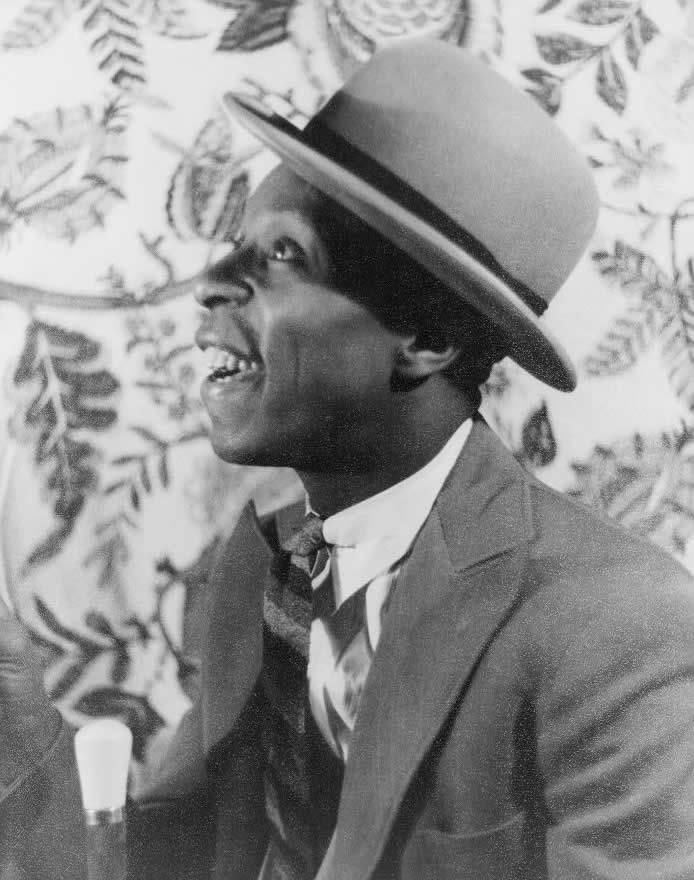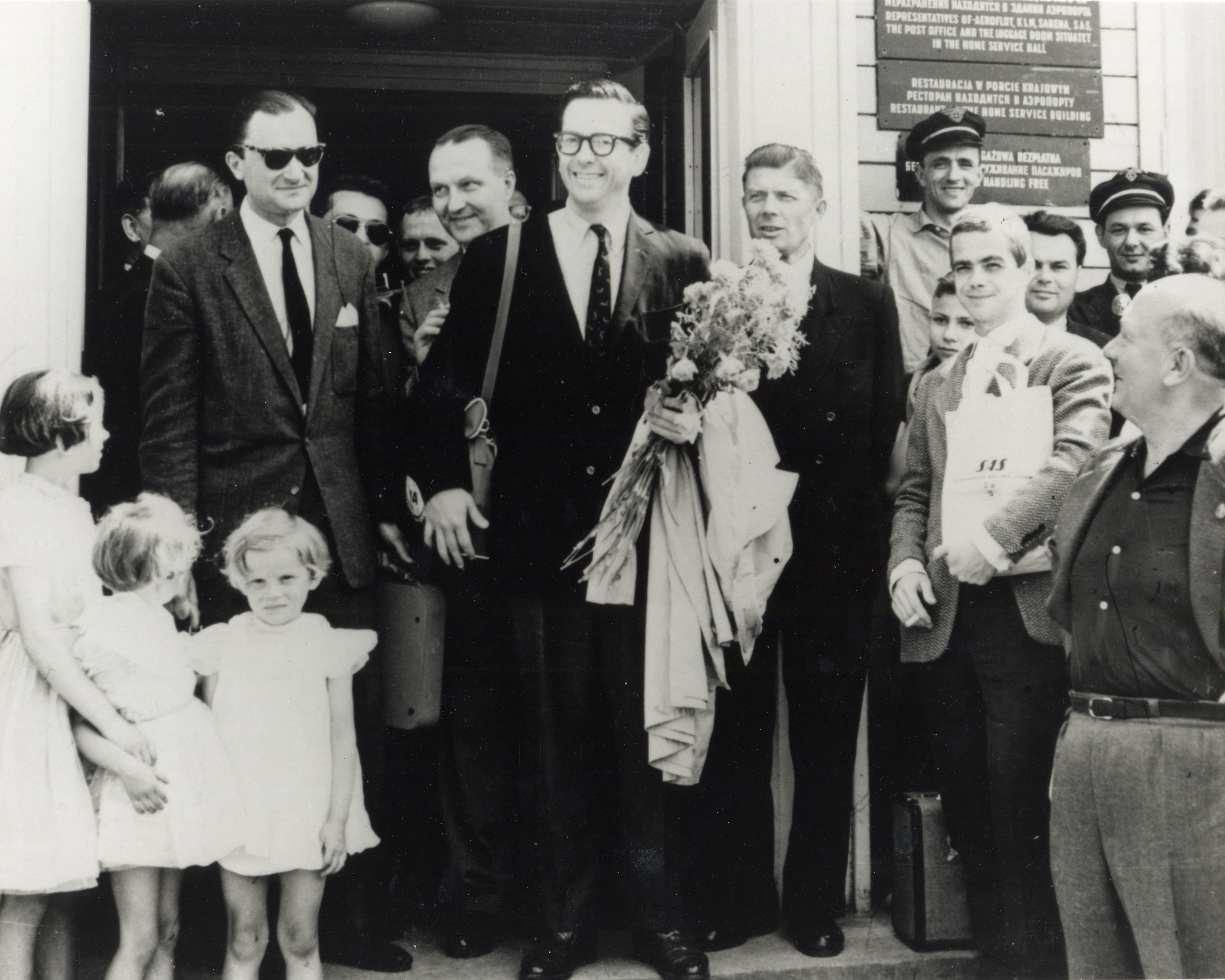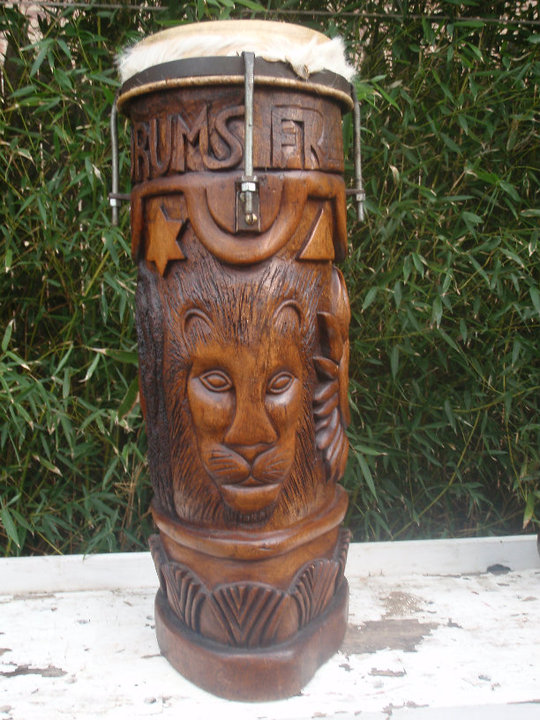|
Herbie Mann At The Village Gate
''Herbie Mann at the Village Gate'' is a 1961 live album by jazz flutist Herbie Mann which was his third album for Atlantic Records, the main label for much of his career. The album was recorded at legendary club The Village Gate.Liner notes to Atlantic Records 1380 Reception AllMusic awarded the album 4½ stars with its review stating "''At the Village Gate'' is the album that first brought Herbie Mann to widespread popular attention, thanks to the inclusion of "Comin' Home Baby," which soon became one of the flautist's signature songs. By the time of the record's release in 1962, however, Mann had already been a bandleader for years, honing his pioneering blend of Afro-Cuban and Brazilian music with hard bop's funky structures just under the public radar. As a result, ''At the Village Gate'' sounds more like a summation than a beginning". Track listing Side One #" Comin' Home, Baby" (Ben Tucker) (8:37) #" Summertime" ( DuBose Heyward, Ira Gershwin, and George Gershwin) (10:18 ... [...More Info...] [...Related Items...] OR: [Wikipedia] [Google] [Baidu] |
Herbie Mann
Herbert Jay Solomon (April 16, 1930 – July 1, 2003), known by his stage name Herbie Mann, was an American jazz flute player and important early practitioner of world music. Early in his career, he also played tenor saxophone and clarinet (including bass clarinet), but Mann was among the first jazz musicians to specialize on the flute. His most popular single was "Hi-Jack", which was a ''Billboard'' No. 1 dance hit for three weeks in 1975. Mann emphasized the groove approach in his music. Mann felt that from his repertoire, the "epitome of a groove record" was ''Memphis Underground'' or '' Push Push'', because the "rhythm section locked all in one perception." Early life, family and education Herbie Mann was born in Brooklyn, New York, New York, to Jewish parents Harry C. Solomon (May 30, 1902 – May 31, 1980), who was of Russian descent, and Ruth Rose Solomon (née Brecher) (July 4, 1905 – November 11, 2004), of Romanian descent who was born in Bukovina, Austria ... [...More Info...] [...Related Items...] OR: [Wikipedia] [Google] [Baidu] |
It Ain't Necessarily So
"It Ain't Necessarily So" is a popular song with music by George Gershwin and lyrics by his brother Ira Gershwin. The song comes from the Gershwins' opera ''Porgy and Bess'' ( 1935) where it is sung by the character Sportin' Life, a drug dealer, who expresses his doubt about several statements in the Bible. The song's melody also functions as a theme for Sportin' Life's character. Controversy The song is controversial for casting doubt on the veracity of the Bible in its central lyrics: "It ain't necessarily so, It ain't necessarily so, The t'ings dat yo' li'ble, To read in de Bible, It ain't necessarily so." The song was criticized by the composer Hall Johnson for depicting African Americans as unfaithful. Influence of Jewish blessings The first and most direct example of influence occurs at the start of the song; the melody and phrasing is nearly identical to the blessing incanted before reading from the Torah. The words "It ain't necessarily so" stand in place of ''Bar'c ... [...More Info...] [...Related Items...] OR: [Wikipedia] [Google] [Baidu] |
Willis Conover
Willis Clark Conover, Jr. (December 18, 1920 – May 17, 1996) was a jazz producer and broadcaster on the Voice of America for over forty years. He produced jazz concerts at the White House, the Newport Jazz Festival, and for movies and television. By arranging concerts where people of all races were welcome, he is credited with desegregating Washington, D.C., nightclubs.Robert McG. Thomas Jr."Willis Conover Is Dead at 75; Aimed Jazz at the Soviet Bloc", ''New York Times'', May 19, 1996. Retrieved February 4, 2010. Conover is credited with keeping interest in jazz alive in the countries of Eastern Europe through his nightly broadcasts during the Cold War. Youth As a young man, Conover was interested in science fiction, and published a science-fiction fanzine, ''Science Fantasy Correspondent''. This brought him into contact with horror writer H. P. Lovecraft. The correspondence between Lovecraft, who was at the end of his life, and the young Conover, has been published as ''Lo ... [...More Info...] [...Related Items...] OR: [Wikipedia] [Google] [Baidu] |
Ben Tucker
Benjamin M. Tucker (December 13, 1930 – June 4, 2013) was an American jazz bassist who appeared on hundreds of recordings. Tucker played on albums by Art Pepper, Billy Taylor, Quincy Jones, Grant Green, Dexter Gordon, Hank Crawford, Junior Mance, and Herbie Mann. He was born in Tennessee. As bass player in the Dave Bailey Quintet in 1961, he wrote the instrumental version of the song " Comin' Home Baby!", first issued on the album ''Two Feet in the Gutter''. Bob Dorough later wrote a lyric to the song, and the vocal version became a Top 40 hit for jazz singer Mel Tormé in 1962. Tucker released the album ''Baby, You Should Know It'' ( Ava, 1963) with Victor Feldman, Larry Bunker, Bobby Thomas, Ray Crawford, Tommy Tedesco, and Carlos "Patato" Valdes. By 1972, Tucker owned two radio stations, WSOK-AM, which had over 400,000 listeners, and WLVH-FM. Both of these were located in his hometown of Savannah, Georgia. He died in a traffic collision in Hutchinson Island, Georgia, o ... [...More Info...] [...Related Items...] OR: [Wikipedia] [Google] [Baidu] |
Drum Kit
A drum kit (also called a drum set, trap set, or simply drums) is a collection of drums, cymbals, and other auxiliary percussion instruments set up to be played by one person. The player ( drummer) typically holds a pair of matching drumsticks, one in each hand, and uses their feet to operate a foot-controlled hi-hat and bass drum pedal. A standard kit may contain: * A snare drum, mounted on a stand * A bass drum, played with a beater moved by a foot-operated pedal * One or more tom-toms, including rack toms and/or floor toms * One or more cymbals, including a ride cymbal and crash cymbal * Hi-hat cymbals, a pair of cymbals that can be manipulated by a foot-operated pedal The drum kit is a part of the standard rhythm section and is used in many types of popular and traditional music styles, ranging from rock and pop to blues and jazz. __TOC__ History Early development Before the development of the drum set, drums and cymbals used in military and orchestral m ... [...More Info...] [...Related Items...] OR: [Wikipedia] [Google] [Baidu] |
Rudy Collins
Rudy Collins (July 24, 1934 – August 15, 1988) was an American jazz drummer born in New York City. Collins played trombone in high school and started on drums at that time as well. He studied with Sam Ulano during 1953–57 and began gigging in New York City, playing with Hot Lips Page, Cootie Williams, Eddie Bonnemere, Dizzy Gillespie, Johnny Smith, Carmen McRae, Cab Calloway, and Roy Eldridge. he played with J.J. Johnson and Kai Winding at the Newport Jazz Festival. Later in the 1950s Collins became increasingly interested in the nascent free jazz scene, in addition to playing with more traditional ensembles. He worked with Herbie Mann from 1959 and later with Cecil Taylor, Quincy Jones, Dave Pike, and Lalo Schifrin. His last recordings were in 1981. Discography With Ahmed Abdul-Malik *''Sounds of Africa'' (New Jazz, 1962) With Gene Ammons *'' Night Lights'' (Prestige, 1970 985 With Ray Bryant *'' The Ray Bryant Touch'' (Cadet, 1967) With Billy Butler *'' This Is Bi ... [...More Info...] [...Related Items...] OR: [Wikipedia] [Google] [Baidu] |
Rhythm In Sub-Saharan Africa
Sub-Saharan African music is characterised by a "strong rhythmic interest" that exhibits common characteristics in all regions of this vast territory, so that Arthur Morris Jones (1889–1980) has described the many local approaches as constituting ''one main system''. C. K. Ladzekpo also affirms the ''profound homogeneity'' of approach. West African rhythmic techniques carried over the Atlantic were fundamental ingredients in various musical styles of the Americas: samba, forró, maracatu and coco in Brazil, Afro-Cuban music and Afro-American musical genres such as blues, jazz, rhythm & blues, funk, soul, reggae, hip hop, and rock and roll were thereby of immense importance in 20th century popular music. The drum is renowned throughout Africa. Rhythm in Sub-Saharan African culture Many Sub-Saharan languages do not have a word for ''rhythm'', or even ''music''. Rhythms represent the very fabric of life and embody the people's interdependence in human relationships. Cro ... [...More Info...] [...Related Items...] OR: [Wikipedia] [Google] [Baidu] |
Chief Bey
James Hawthorne Bey (April 17, 1913 – April 8, 2004)Associated Press"Chief Bey, 91 Jazz Drummer."''The New York Times'', April 13, 2004. Retrieved October 28, 2016.Jenkins, Todd S"Chief Bey: Master of African drums."''www.jazzhouse.org.'' Retrieved October 28, 2016. was an American jazz percussionist and African folklorist. He played under the name of Chief Bey. Early life Born James Hawthorne in Yemassee, South Carolina, Bey moved with his family to Brooklyn and then to Harlem, where he began playing drums and singing in church choirs. He also served in the Navy during World War II and later attended cosmetology school. Later life and career In the 1950s, Bey performed in an international tour of ''Porgy and Bess'' starring Leontyne Price and Cab Calloway. He also began a busy recording career, performing on Herbie Mann's ''At the Village Gate'' (1961), Art Blakey's ''The African Beat'' (1962), Ahmed Abdul-Malik's ''Sounds of Africa'' (New Jazz, 1961), as well as albums by Ha ... [...More Info...] [...Related Items...] OR: [Wikipedia] [Google] [Baidu] |
Conga
The conga, also known as tumbadora, is a tall, narrow, single-headed drum from Cuba. Congas are staved like barrels and classified into three types: quinto (lead drum, highest), tres dos or tres golpes (middle), and tumba or salidor (lowest). Congas were originally used in Afro-Cuban music genres such as conga (hence their name) and rumba, where each drummer would play a single drum. Following numerous innovations in conga drumming and construction during the mid-20th century, as well as its internationalization, it became increasingly common for drummers to play two or three drums. Congas have become a popular instrument in many forms of Latin music such as son (when played by conjuntos), descarga, Afro-Cuban jazz, salsa, songo, merengue and Latin rock. Although the exact origins of the conga drum are unknown, researchers agree that it was developed by Cuban people of African descent during the late 19th century or early 20th century. Its direct ancestors are thought to be ... [...More Info...] [...Related Items...] OR: [Wikipedia] [Google] [Baidu] |
Ray Mantilla
Raymond Mantilla (June 22, 1934 – March 21, 2020) was an American percussionist. Discography As leader * ''Mantilla'' (Inner City, 1978) * ''Hands of Fire'' (Red, 1984) * ''Synergy'' (Red, 1986) * ''Dark Powers'' (Red, 1988) * ''The Next Step'' (Red, 2000) * ''Man-Ti-Ya'' (Savant, 2004) * ''Good Vibrations'' (Savant, 2006) * ''The Connection'' (Savant, 2013) * ''High Voltage'' (Savant, 2017) As sideman With Mose Allison * 1994 ''The Earth Wants You'' * 1997 ''Jazz Profile'' With Gato Barbieri *'' Chapter Three: Viva Emiliano Zapata'' (Impulse!, 1974) *'' Yesterdays'' (Flying Dutchman, 1974) With Ray Barretto * 1961 ''Barretto Para Bailar'' * 1963 ''Latino! & Afro-Jaws'' * 1973 ''Carnaval: Latino!/Pachanga with Barretto'' With Joe Beck *''Beck & Sandborn'' (Columbia, 1975) *''Beck'' (Kudu, 1975) With Walter Bishop Jr. *''Cubicle'' (Muse, 1978) With Art Blakey *''Child's Dance'' (Prestige, 1972) *'' In My Prime Vol. 1'' (Timeless, 1977) *''In My Prime Vol. 2'' (Timeless, 1 ... [...More Info...] [...Related Items...] OR: [Wikipedia] [Google] [Baidu] |
Double Bass
The double bass (), also known simply as the bass () (or #Terminology, by other names), is the largest and lowest-pitched Bow (music), bowed (or plucked) string instrument in the modern orchestra, symphony orchestra (excluding unorthodox additions such as the octobass). Similar in structure to the cello, it has four, although occasionally five, strings. The bass is a standard member of the orchestra's string section, along with violins, viola, and cello, ''The Orchestra: A User's Manual'' , Andrew Hugill with the Philharmonia Orchestra as well as the concert band, and is featured in Double bass concerto, concertos, solo, and chamber music in European classical music, Western classical music.Alfred Planyavsky [...More Info...] [...Related Items...] OR: [Wikipedia] [Google] [Baidu] |
Ahmed Abdul-Malik
Ahmed Abdul-Malik (born Jonathan Tim, Jr.; January 30, 1927 – October 2, 1993) was an American jazz double bassist and oud player. Abdul-Malik is remembered for integrating Middle Eastern and North African music styles in his jazz music.Kelsey, Chri"Ahmed Abdul-Malik: Biography" AllMusic. Retrieved October 2, 2017. He was a bass player for Art Blakey, Earl Hines, Randy Weston, and Thelonious Monk, among others. Early life Abdul-Malik claimed that his father was from Sudan and moved to the United States. Research by historian Robin Kelley, however, indicates that Abdul-Malik was born to Caribbean immigrants and changed his birth name: Ahmed Abdul-Malik was born Jonathan Tim Jr., (sometimes spelled "Timm") on January 30, 1927, to Matilda and Jonathan Tim Sr. – both of whom had immigrated from St. Vincent in the British West Indies three years earlier. They also had a daughter, Caroline, born a little more than a year after Jonathan Jr. Jonathan Tim Sr.'s death certificate not ... [...More Info...] [...Related Items...] OR: [Wikipedia] [Google] [Baidu] |






